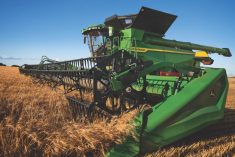MarketsFarm — The most recent principal field crop acreage report from Statistics Canada predicts mustard seed area will drop from approximately 500,000 acres to 400,000 in 2019, concentrated mainly in southwestern, south-central, and west-central Saskatchewan.
Although fewer acres are expected to be seeded, prime mustard-growing areas in Saskatchewan and Alberta saw precipitation in recent weeks, which bodes well for yields. Mustard-seeded areas have been considerably drier than average in recent years.
“It really took a toll some years,” said Kevin Hursh, executive director of the Saskatchewan Mustard Development Commission. “It would be nice to think that this year is somewhat different.”
Read Also

Brazil to reap record soy crop in 2025/2026, increase exports
Brazil’s Conab said the country will reap a record soybean crop of 177.6 million tons in the 2025/2026 harvest year, according to data released on Thursday.
Hursh predicted the drop in acreage could be more than offset if yields are stronger thanks to more precipitation, but it’s still early in the season.
Because mustard seed is very small, it has to be planted shallowly. Dry spring conditions can lead to patchy germination.
“You never know how the yield will turn out, but it improves the yield prospect at this early point in the season,” Hursh said.
“Getting good moisture for crop establishment has been a concern in years prior, but now we have really good moisture, so it should germinate evenly.”
Price stability and favourable springtime conditions could mean mustard will be an ideal crop to grow.
Prices have been reasonably stable for both old-crop and new-crop, give or take, Hursh said.
“The significant precipitation event really improved the picture.”
— Marlo Glass writes for MarketsFarm, a Glacier FarmMedia division specializing in grain and commodity market analysis and reporting.













